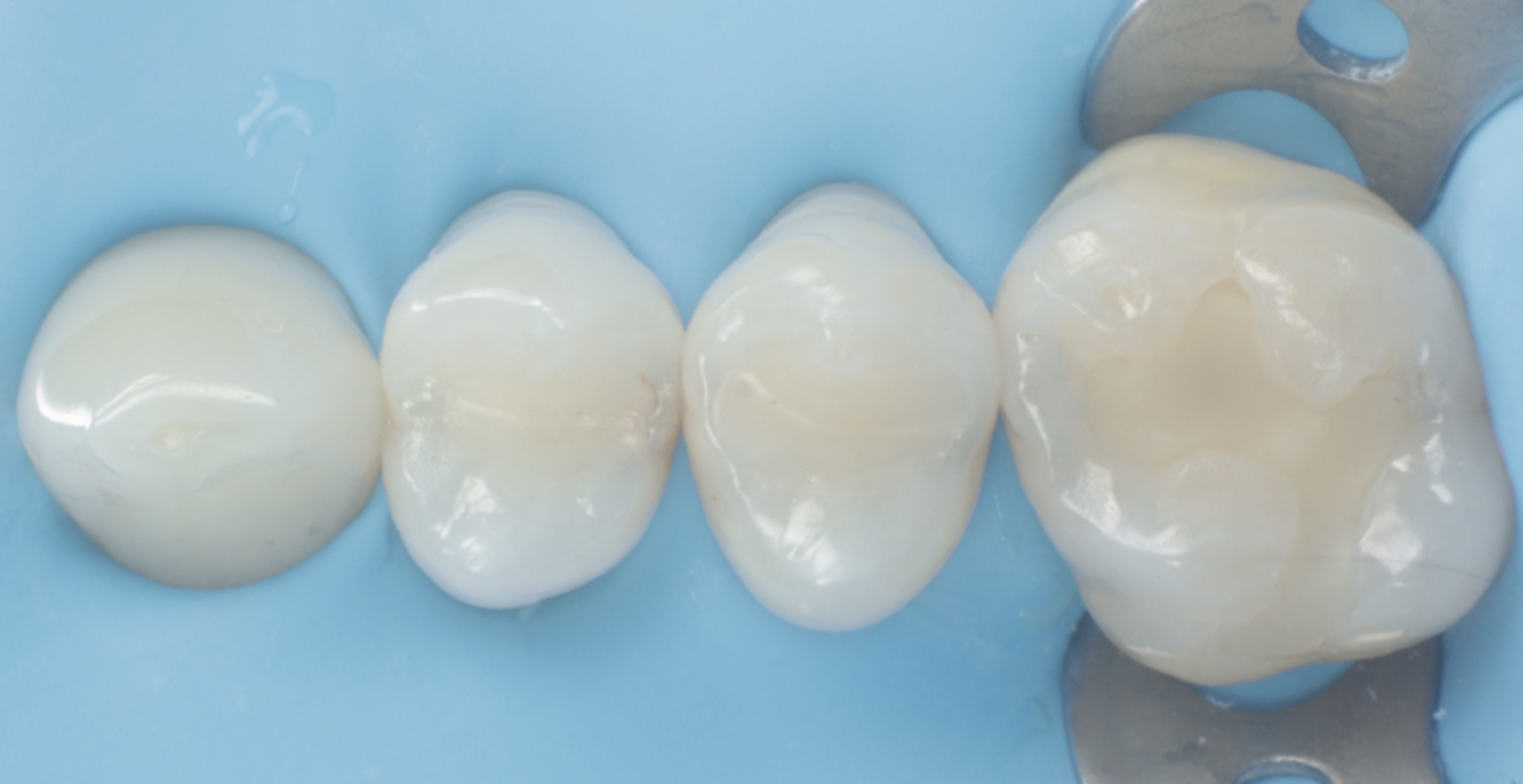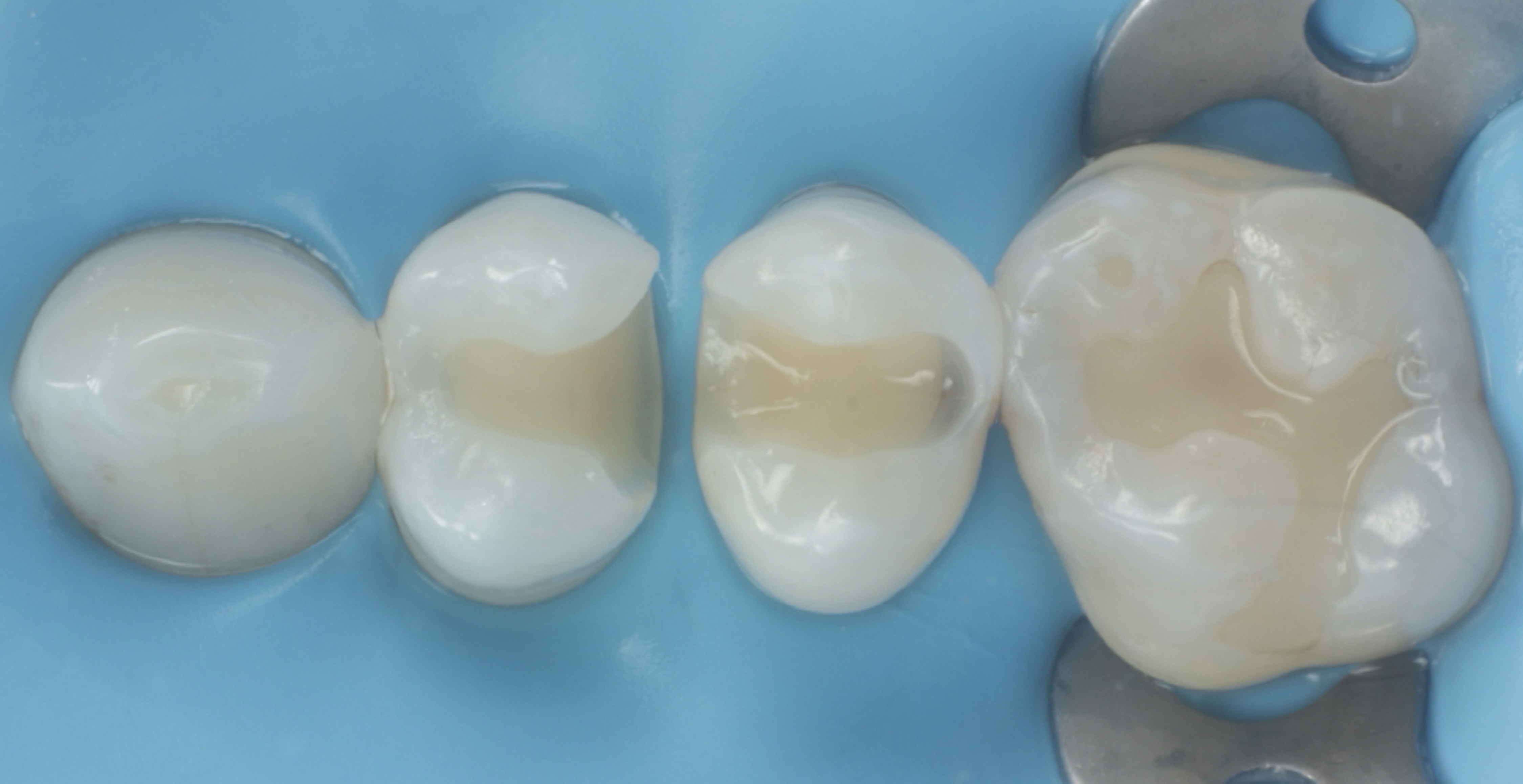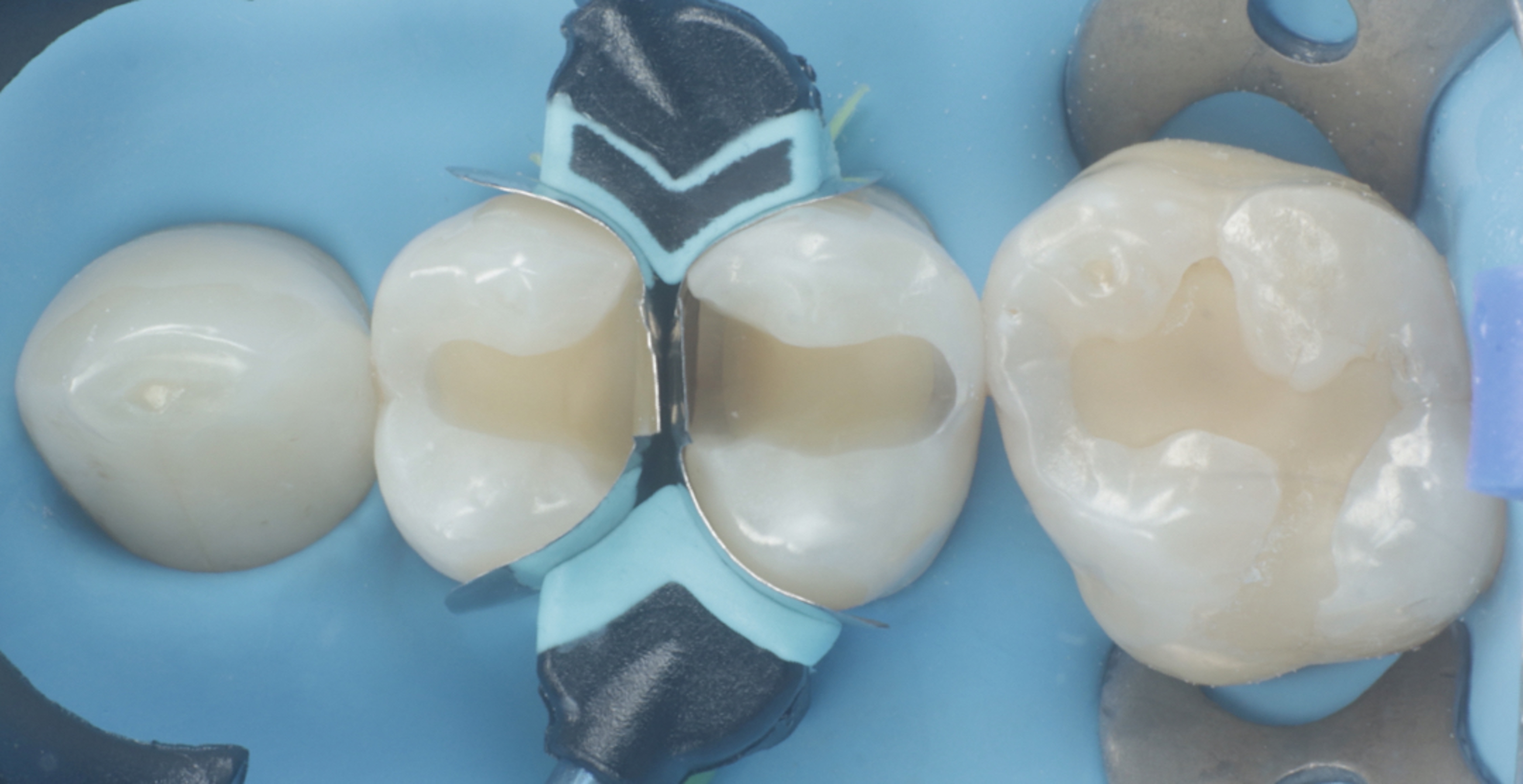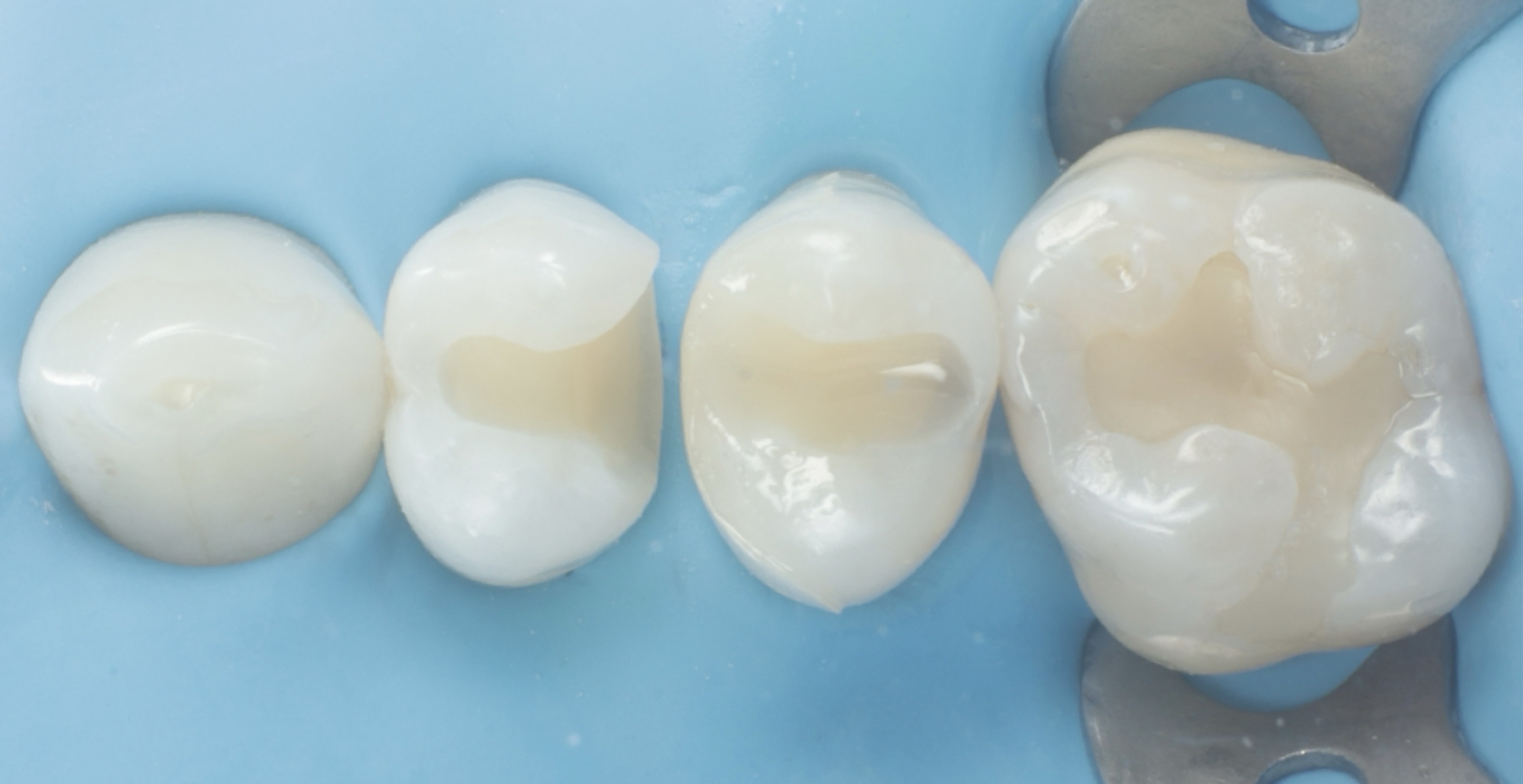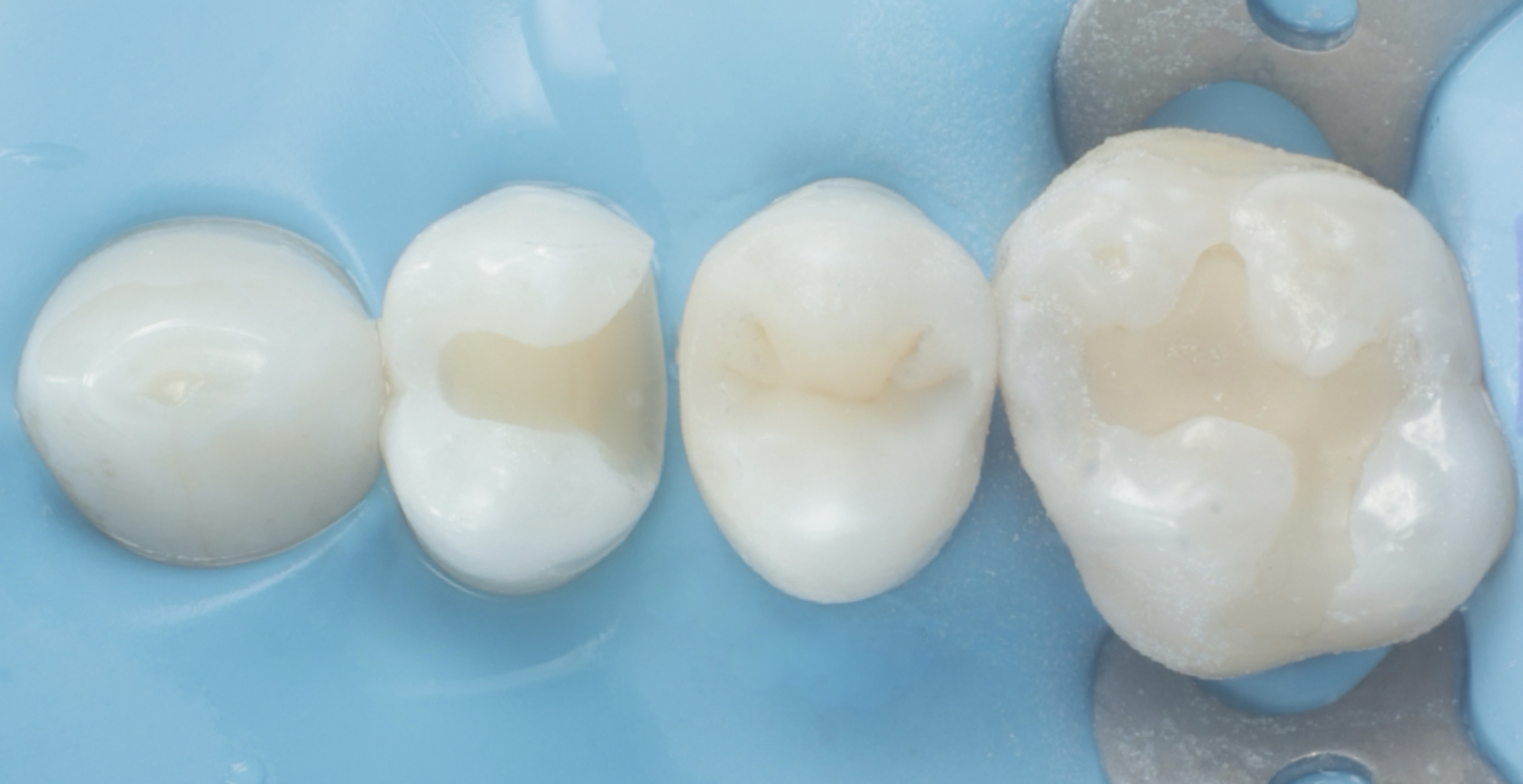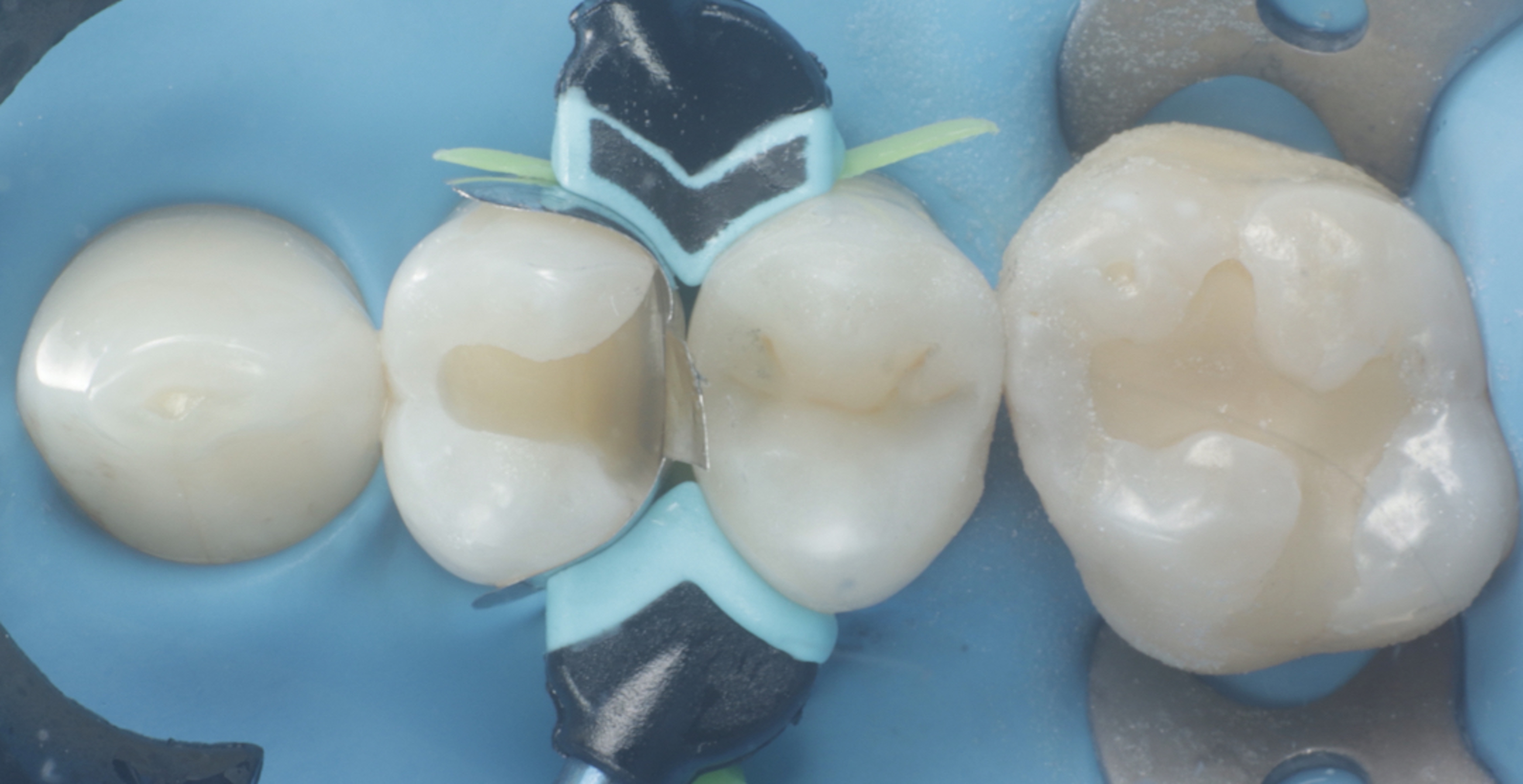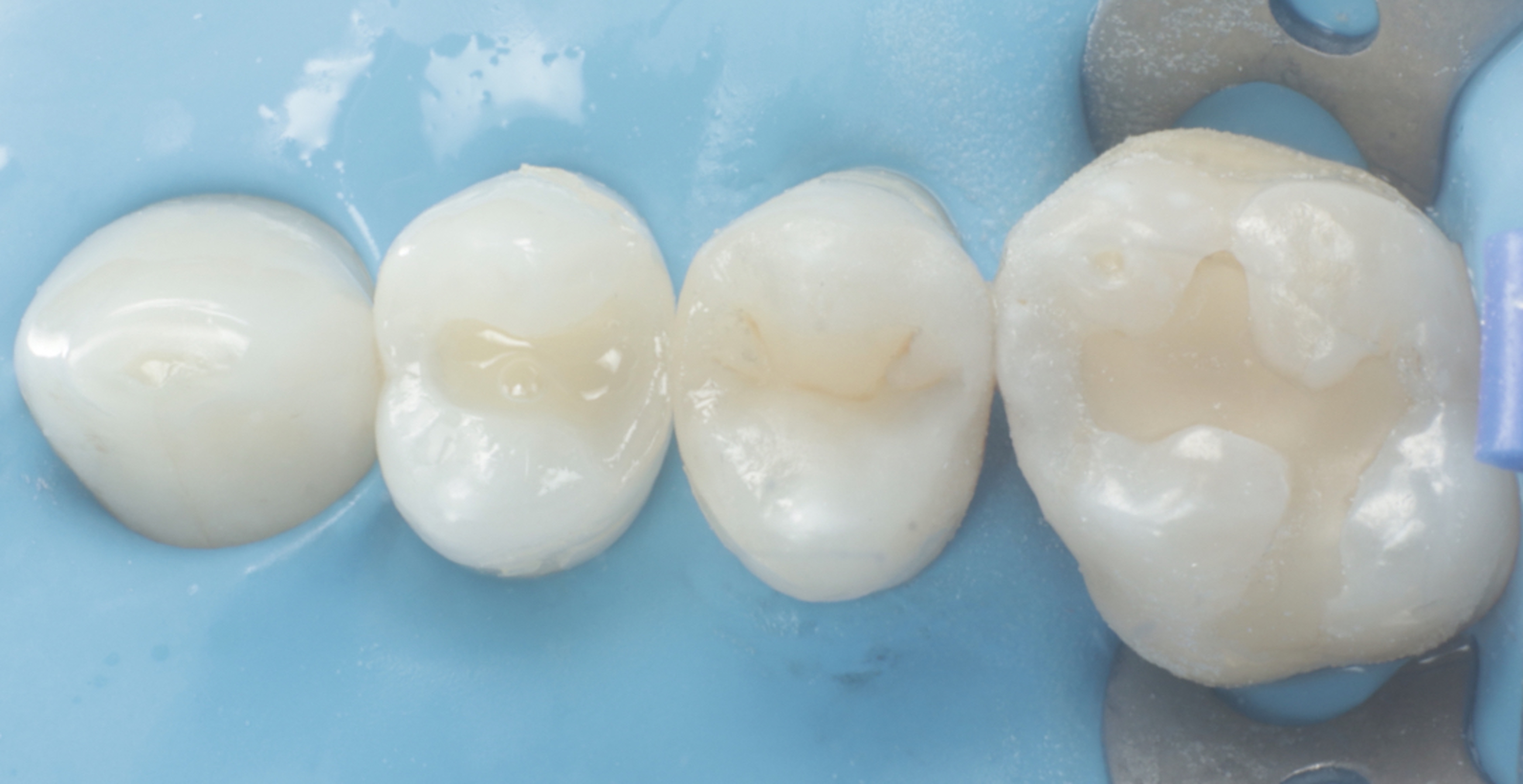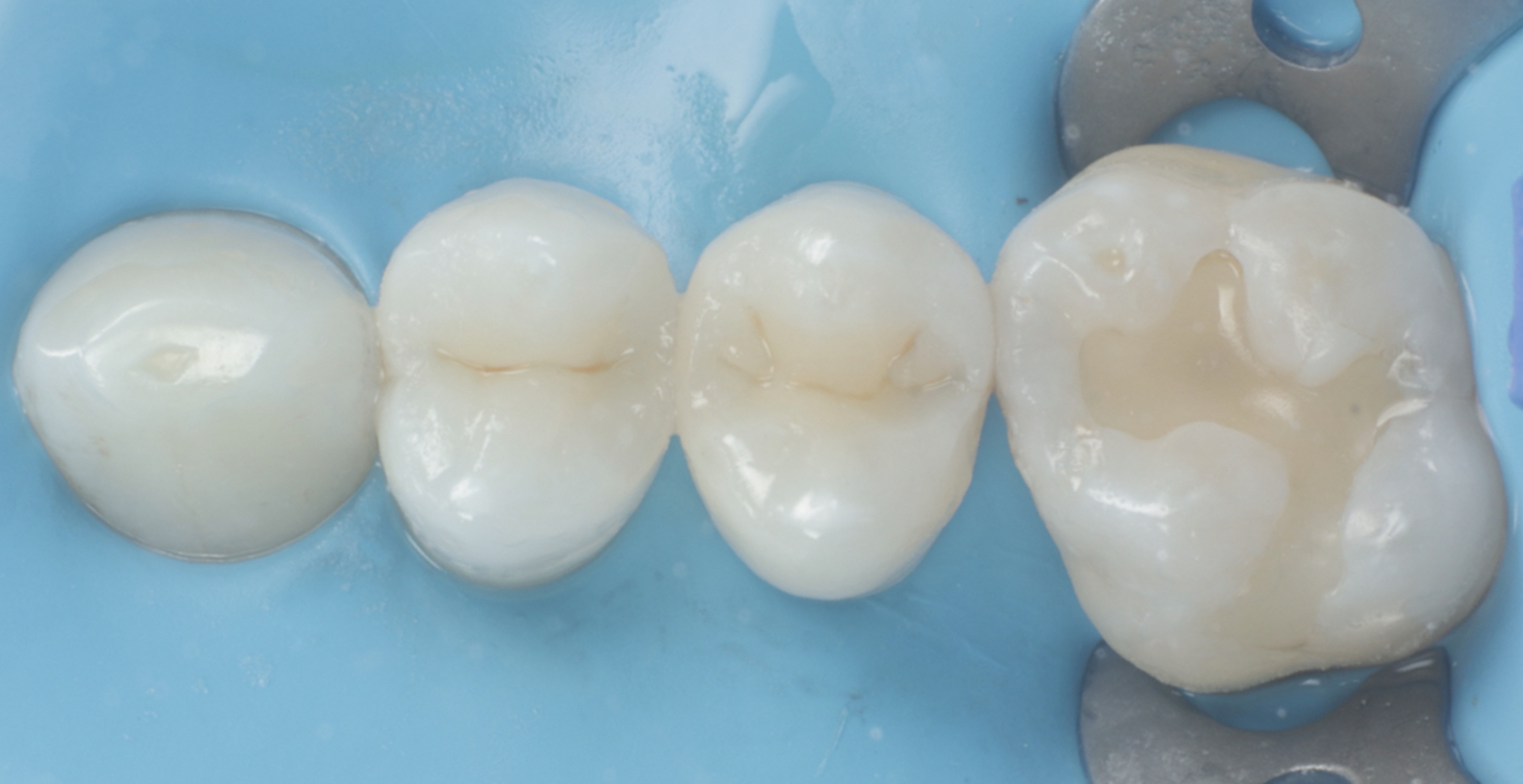INTRODUCTION
In Class II interproximal direct composite restorations, restoring the anatomical shape of the tooth and creating a tight, stable contact point with adjacent teeth, as well as achieving a correct emergence profile, is crucial. Accomplishing this requires a versatile system of matrices, rings, and wedges. Failure to do so can result in overhangs or open contacts, leading to food impaction, plaque accumulation, and potential periodontal issues or secondary caries.
This process becomes even more complicated in back-to-back scenarios. The presence of two adjacent cavities to be restored simultaneously makes the routine procedure for Class II lesions significantly more complex. Proper placement and adaptation of the matrices, at the same time, to achieve an anatomically proportionate and correct contour for both cavities can be challenging and time-consuming. Furthermore, achieving marginal adaptation in the deepest regions of the cavities can be difficult. Traditional wedges (solid or hollow) are often pushed upward by the papilla, which may distort the matrix or fail to provide a proper seal in one or even both cavities.
The QUAD Matrix System® from Garrison Dental Solutions is an innovative solution designed to enhance the predictability and quality of standard Class II direct restorations. Additionally, it offers speed and efficiency, making it ideal for back-to-back restorations.
This clinical case report demonstrates the restoration of back-to-back Class II cavities with composite on maxillary premolars using the QUAD Matrix System®, highlighting the benefits discussed above.
CASE REPORT
A 42-year-old female patient presented with carious lesions on the distal surface of the maxillary left first premolar and the mesial surface of the maxillary left second premolar, confirmed through visual examination and radiographic analysis. The treatment plan involved restoring both teeth with direct composite restorations using the innovative QUAD Matrix System®.
|
|
| Figure 1. Rubber dam isolation of the upper left quadrant with a thick rubber dam sheet. Proper isolation of the operative field is crucial for the long-term success of direct composite restorations. |
|
|
| Figure 2. Cavity preparation completed. Carious tissue was removed using a fine diamond bur and ultrasonic tips. During this process, pre-wedging was performed with A+ Wedges from Garrison Dental Solutions due to their rigidity and ability to control potential bleeding. Finally, the cavity was sandblasted with 29 µm aluminum oxide. |
|
|
| Figure 3. Part of the QUAD Matrix System®. QUAD split wedges, available in four sizes—small, medium, large, and anatomical (for irregular anatomies). The QUAD asymmetrical ring (blue size) has one side with the traditional tip for contouring the tooth, and the other side incorporates a driver tip, designed to work with the QUAD split wedges. |
|
|
| Figure 4. The QUAD Matrix System® was placed and adapted using two Firm Matrix Bands® sectional matrices (FXH 150) and the blue pressure ring simultaneously. The flexible nature of the wedge material, combined with the driver tip of the ring, effectively secures the matrix band in the most apical area without causing deformation. Additionally, the specific design of the wedge, which conforms to the natural “V”-shaped embrasure space, ensures proper sealing between the matrices and the cavities—a critical step when sealing two separate teeth simultaneously. Note how placing the two matrices simultaneously facilitates achieving an ideal anatomic distribution. |
|
|
| Figure 5. The interproximal anatomy of the second premolar was restored. Subsequently, the QUAD Matrix System® was removed to verify and refine the achieved proximal contour, if necessary. Generally, it is advisable to restore the most distal cavities first, as this allows for better visibility during polishing and finishing. |
|
|
| Figure 6. Occlusal view of the final restoration of the maxillary left second premolar after the final polishing and finishing. Note how the mesial part of the tooth is well-proportioned anatomically compared to the distal part. |
|
|
| Figure 7. Placement and adaptation of the QUAD Matrix System® using a Firm Matrix Bands® sectional matrix (FXH 150) and the blue pressure ring to restore the distal cavity of the maxillary left second premolar, following the standard procedure for a Class II restoration. |
|
|
| Figure 8. The distal marginal ridge of the first premolar was restored. The QUAD Matrix System® was then removed to verify and refine the interproximal anatomy and contact point achieved. |
|
|
| Figure 9. Occlusal view of the final restorations after the final polishing and finishing. |
CONCLUSIONS
Most of the challenges of back-to-back restorations are effectively addressed with the new QUAD Matrix System®, which simplifies the process. Thanks to its specifically designed wedge and ring, this advanced system enables clinicians to achieve anatomically accurate contours and precise marginal adaptation, even in the deepest regions. Unlike traditional wedges, which are prone to displacement and may compromise the seal, the split wedge technology of the QUAD wedge provides a reliable and efficient approach to restoring adjacent cavities, streamlining complex procedures and delivering predictable results.
